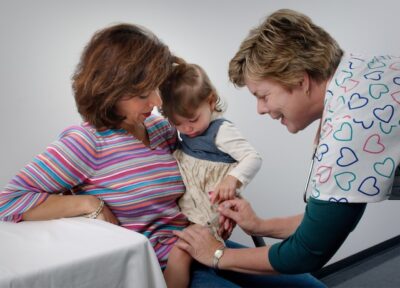Arena Blake, a Texas mother, vividly remembers how her beloved son was always on the move from the moment he could walk. The little boy would scarcely sit still at the dinner table or show interest in kid-friendly activities like coloring.
She shoved it off, believing her child was just inquisitive and full of energy. However, the first day in school would jolt her out of her confidence. Arena’s bright boy, though full of enthusiasm for learning, would constantly find himself in trouble.
His work remained unfinished – some days he found school “boring,” whereas some others, it was “too hard.” The desperate mother tried everything in her power to motivate her son – rewards, punishments, and pleas. But nothing could have prepared her for that fateful diagnosis.
Her son was not lazy or indisciplined; he was simply suffering from Attention Deficit Hyperactivity Disorder (ADHD). The stigma surrounding ADHD is real and parents often feel isolated and helpless. Arena described her experience as the “hardest thing” she’s ever had to do in her life.
In this article, we will discuss how ADHD affects children and parents. Additionally, we will talk about ways parents can support themselves and their children.
How ADHD Affects Children and Parents?
As per the Centers for Disease Control and Prevention’s national survey, around six million children (ages 3 to 17) have received an ADHD diagnosis. The condition’s prevalence is higher among boys (13%) than girls (6%).
ADHD is among the most common neurodevelopmental childhood disorders characterized by a hyperactive brain. Children may find it difficult to control their impulses and pay attention while being overtly active.
Just like Arena’s son, children with ADHD feel like their brain is telling them to perform too many tasks. The telltale signs of this condition include –
- Frequent and prolonged daydreaming
- Being forgetful and losing one’s belongings
- Staying fidgety or squirmy
- Talking too much
- Finding it too challenging to resist temptation
- Being unable to get along with others
- Taking unnecessary risks
- Making silly and careless mistakes
- Finding it tough to take turns
In most cases, genetics plays a key role in causing the condition. However, other factors could be responsible, including premature birth, brain injury, and tobacco or alcohol use during pregnancy.
The CDC rules out family chaos, watching too much television, and excessive sugar consumption as possible risk factors. ADHD may overlap with other learning disabilities, so a medical examination is the only way to get an accurate diagnosis. Children with this condition may have co-occurring disorders like anxiety and depression.
This should give you an idea of how overwhelming life with ADHD can be. All the same, it may be called a family disorder because parents share their child’s burden (often the heavier end of it). Their child’s hyperactivity and inability to follow instructions can not only cause stress but even embarrassment in public places.
Many people still do not understand the condition and may stigmatize parents. They may believe that ADHD is simply a way to excuse their child for bad behavior and laziness. Feelings like frustration, hopelessness, and being disrespected are all very common.
The disorder can also impact the couple’s marriage. Studies have found that divorce is commonplace among couples with ADHD children. This is especially true in cases where they are unable to arrive at a unified parenting approach.
How Parents Can Support Themselves and Their Child?
The tug of war between tackling their child’s condition and external stigma can make even the ‘easy’ days challenging. Let’s understand the different ways in which parents can help themselves and their little ones.
Walking a Mile or Two in The Child’s Shoes:
Often, ADHD children appear to cause a drift in their parents’ relationships because the latter misunderstands the condition’s ramifications. Even among children with ADHD, no two children are the same.
In the case of mental and behavioral disorders, different symptoms (with varying intensity) are seen. Before jumping to any conclusions, parents must take time to understand their child’s unique case. What are the most common symptoms to expect? How will these symptoms impact their life in general?
If the child is also diagnosed with a co-occurring condition, parents need to educate themselves on that too. Only then will they have a complete picture of why their child is acting the way they do.
Securing the Right Treatment Plan:
The CDC states that ADHD medication is more common than some people think. The medicines help children to calm down, enhance cognitive function, and act as stimulants. However, the child needs acceptance and an approach that matches their current level of functioning.
This is something medication alone cannot achieve. A pediatric nurse can intervene to suggest and implement a structured treatment plan. They are well-trained in the nuances of diagnosis and patient care and will ensure –
- The child remains free from any injuries
- The child does not violate others’ boundaries
- The child demonstrates age-appropriate social skills
- The child concentrates on completing tasks
- The child follows instructions properly
Despite registered nurses’ mass retirement, numerous individuals are combining their love for their children and empathy for emerging child disorders through a second-degree ABSN nursing program online. They are certified and licensed to work in different care settings to offer ADHD support to children and their parents.
According to the University of Indianapolis, nurses may collaborate with other healthcare team members like counselors, special education teachers, etc. They do so to gather information on the child’s progress or recommend them to mental health services.
Throughout treatment, they will use direct and simple instructions, maintain a daily routine, and avoid distracting settings. Parents can also seek assistance in understanding their child’s condition better to best support them.
Preparing the Child for Transitions:
Suppose a child is playing their favorite video game or watching a well-loved television program. Their parents ask them to stop what they’re doing because it’s time to finish their homework. At the least, such a request could invite the child’s hesitancy and refusal, but they will eventually obey.
In cases of children with ADHD, the transition is much more challenging. This is because it takes quite a while for the child to concentrate on any activity. In lieu of under-the-breath complaints, the parent may get endless negotiations and violent outbursts.
During such moments, one must resist the temptation to lash out. It’s best to prepare the child for transitions beforehand so they can at least expect what’s coming next. This can be done by –
- Walking them through the daily schedule. This will give them an idea of what a particular day would look like.
- Setting timers at intervals, ideally 10 minutes before the transition followed by five minutes and one minute before the transition.
- Rewarding them with their favorite treat or additional gaming time after completing a smooth transition.
Attending a Behavioral Parent Training (BPT) Class:
Couple tensions among those with ADHD children also arise due to feelings of inadequacy. Parents may feel that they are “bad parents” or incompetent to support their children.
Raising children with ADHD indeed requires specific skills that are not natural for most people. But this does not make someone bad at parenting; it simply means they need to develop those skills.
BPT is a recommended class for parents to receive answers to their most common concerns. These include –
- Managing the child’s behavior more effectively
- Interacting with them in a manner that doesn’t spark volatile responses
- Reducing familial and other relationship stress
- Making daily routines easier
Out of desperation, many parents resort to non-specific rewards and punishments, grounding, yelling, or even hitting their child. These strategies will only backfire and make the child resentful. BPT sessions will train parents to respond well even if their child is throwing tantrums.
The combined approach of nursing-led treatment and BPT will reduce tensions and help to stay in control of the situation.
The Road Ahead:
Besides the above-mentioned strategies, parents can encourage their children to practice mindfulness through meditation apps. Mindfulness helps in calming the child down and also enables them to show restraint and self-control.
There are a plethora of apps for ADHD, so taking the time to understand their features before choosing is important. Finally, it is crucial to remember that despite ADHD being a serious disorder, there is hope.
Overcoming the early stages of discomfort, chaos, and the urge to jump ship is needed to experience a better future. It’s time to allow ADHD to become the fuel, not the enemy. Time will sort all things out as parents unite to fight for their children.










